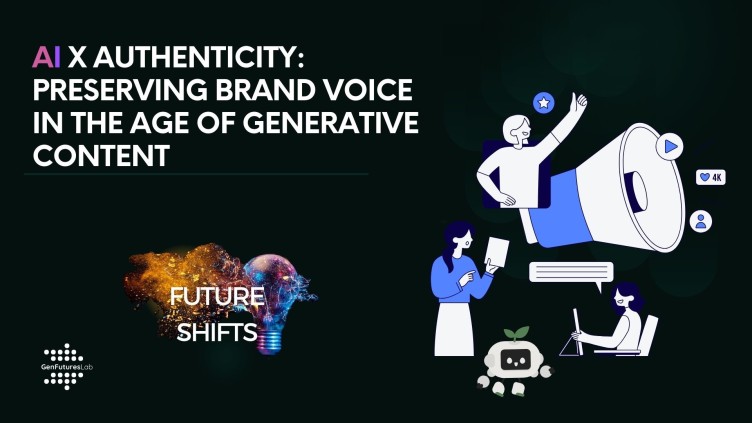AI x Authenticity: Preserving Brand Voice in the Age of Generative Content
In a world flooded with generative content, one question is echoing louder than ever: How do we keep our brand’s voice while using AI to create?
The rise of tools like ChatGPT and Midjourney has made it possible for brands to scale content production at unprecedented speed. But speed isn’t everything, not if your message starts sounding robotic, off-brand, or just plain generic.
At Genfuture Lab AI, we help organisations balance innovation with identity. In this issue, we explore how to work with GenAI, not against your brand’s voice.
Why Authenticity Still Matters
People can tell when something doesn’t feel real and they care. A 2024 YouGov survey found that half of consumers can spot AI-generated content, especially younger ones. About a quarter said it feels impersonal, and some even saw it as a sign that the brand wasn’t making an effort. A Forbes piece from the same year echoed this, with many saying AI-made ads just don’t connect emotionally. The takeaway? Audiences still want to hear a real voice behind the message and if you’re using AI, it has to sound like you.
Training LLMs to Speak You
One of the most effective (and underused) techniques is creating a brand voice profile using custom instructions.
1. Customising AI Prompts to Reflect Brand Voice
Utilising platforms like ChatGPT, brands can:
- Define specific tone and language preferences (e.g., professional, conversational, witty).
- Provide examples of past content to guide AI outputs.
- Incorporate brand-specific terminology and messaging frameworks.
This approach ensures consistency and authenticity in AI-generated text.
2. Maintaining Visual Consistency with AI-Generated Imagery
When employing tools like Midjourney:
- Develop a visual style guide detailing preferred color schemes, imagery styles, and thematic elements.
- Use reference images to guide AI in producing visuals that align with brand aesthetics.
- Regularly review and curate AI-generated visuals to ensure they meet brand standards.
A 2025 study from Columbia Business School found that AI-generated ads performed better when they didn't overtly appear AI-created, highlighting the importance of subtlety and alignment with human-crafted content.
Transparency and Ethical Considerations
People don’t mind if brands use AI but they just want to know about it. A 2023 study by IZEA showed that 86% of consumers think AI-generated content should be clearly disclosed. Being upfront doesn’t hurt your credibility; it actually builds trust. When brands explain how they’re using AI to help, not replace, human creativity, it shows honesty and intention. And that goes a long way with audiences today.
Conclusion
Using AI tools doesn’t mean sounding artificial. With the right strategy, brands can produce faster, smarter content that stays entirely on-brand.
If you're experimenting with AI in your content strategy or struggling to maintain voice at scale join mn upcoming AI for Marketing Course, or reach out for tailored consultancy.
Further Reading:
- YouGov Survey on AI-Generated Content Perception
- Forbes: Consumer Reactions to AI-Generated Ads
- Columbia Business School Study on AI-Generated Ads
- IZEA Research on AI Content Disclosure
.svg)



.svg)
.svg)
.svg)
.svg)

.svg)

